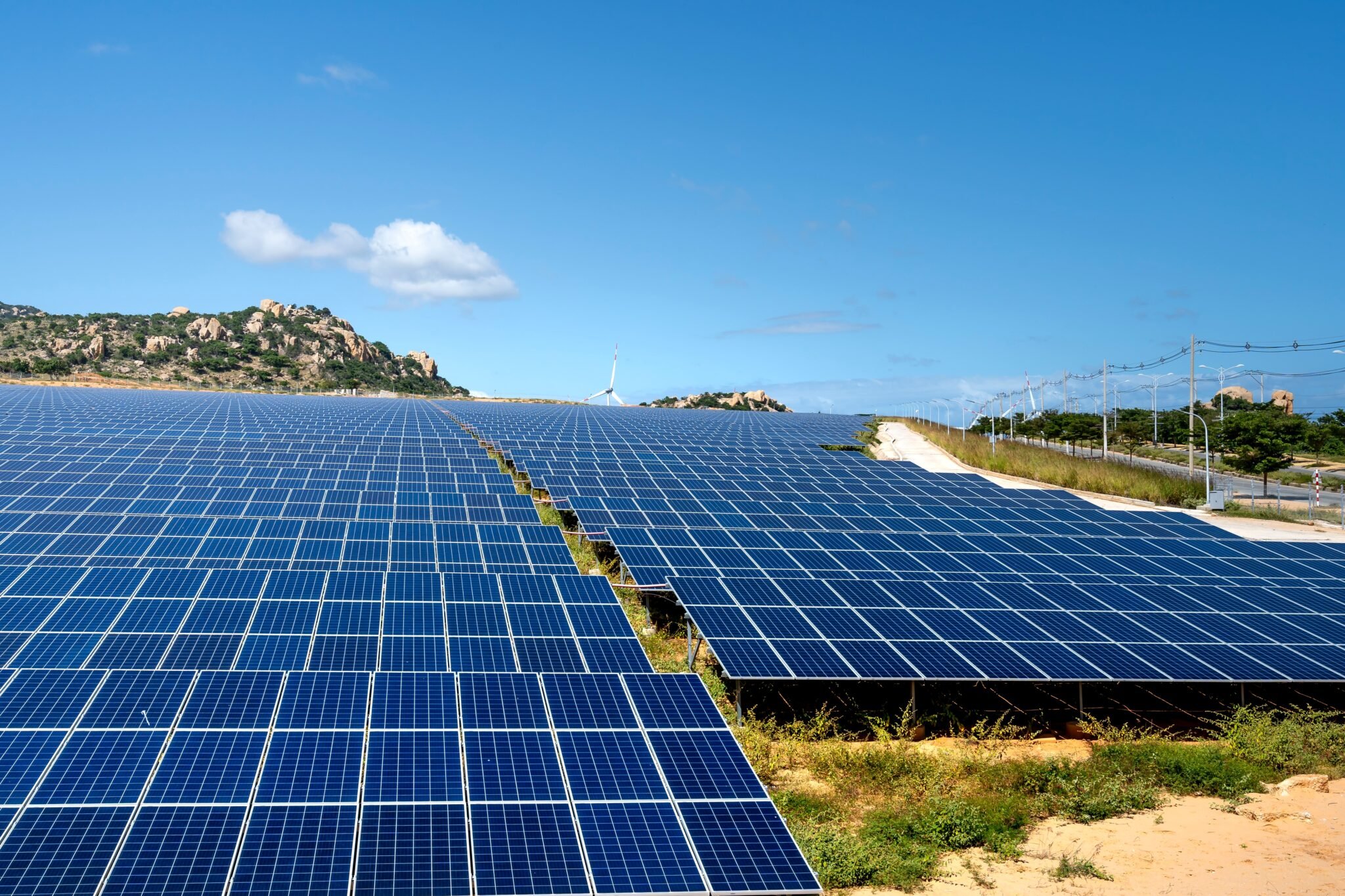OR AS WE CALL IT, THE BIG DECOMMISH
Solar Panel Decommissioning Services
Welcome to Solar Recycling™️…
Specializing in large commercial and utility-scale solar panel decommissioning projects. We partner with solar installers, contractors, real estate developers around the world that want to decommission used and old solar panels and equipment.

Services Overview
Sell Solar Panels & Equipment
Solar Asset Recovery is the secondary market for excess new and used solar panels, inverters, battery backup storage.
Solar Panels Decommissioning
If we cannot recover any value on your solar panels and equipment we can offer a solar panel decommissioning.
Buy Solar Panels & Equipment
Interested in procuring used or refurbished solar panels, inverters, or battery storage?
We ship globally.
Decommission Used Solar Panels Today!
By submitting this form, I agree to receive email responses from Solar Recycling™️.

Decommission Solar Panels and Equipment
Solar Asset Recovery is the secondary market for excess new and used solar panels, inverters, battery backup storage and other hardware. We help to recoup some cash or try to offset costs of shipping and handling by decommissioning your used solar panels and equipment.
Are you looking to decommission old solar panels, inverters or power storage? Contact us with the details and would love to see if we can be of assistance.
*We don’t typically deal with small residential projects, only large scale commercial and utility-scale decommissioning. Typical minimum would be 100 panels.
We Work With
Solar Installers
Commercial Roofers
Electrical Contractors
energy and utility companies
general Contractors
Connect With Us
It’s tough to be proud about how environmentally friendly renewable energy sources are if they turn out to be major sources of pollution in the future.
Frequently Asked Questions
-
- Planning: evaluating the solar panel installation and developing a decommissioning plan according to the specific condition. The decommissioning plan should include:
-
- The list of potentially hazardous materials
- The list of valuable/salvageable components
- Timeline for decommissioning
- Budget
-
-
- The size of the solar panels and/or array
- The type of the solar panels
- Location of mounting/installation
- Potential environmental impact of the decommissioning process
- Removal: remove the solar panel from where it was installed or mounted (i.e., on a roof.) Depending on the condition, the removal process may require the use of specialized equipment like a crane.
- Disposal of hazardous materials: most solar panels contain hazardous materials (I.e., lead, cadmium, mercury, etc.) in their components, and disposing of these materials may require specialized equipment and/or methods.
- Recycling: the recyclable materials (i.e., glass, metal materials, plastic, silicon, etc.) contained in the solar panels are then recycled in an environmentally responsible manner. Depending on the complexity of the process, sending the solar panels to a specialized recycling facility may be needed.
-
The cost of decommissioning a solar panel can vary from under $1,000 to more than $5,000 per panel. Factors that may affect the decommissioning costs are as follows:
- Size and quantity
- Type of solar panels
- Location of where they were installed
- Cost of disposal and recycling in the area
- The age of the solar panels. Older solar panels may contain more hazardous materials and will be more costly to recycle
- The condition of the solar panels. Damaged solar panels may require specialized equipment for removal and recycling.
- Local regulations. Depending on the local environmental regulations, the cost of decommissioning solar arrays can vary.
For example, if the solar arrays are located in remote, hard-to-reach areas, the cost would be higher. It’s also quite obvious that decommissioning larger solar arrays will cost more than recycling a single, household-grade solar panel.
Here are the typical key stages of a solar panel decommissioning process:
- Site assessment: a site assessment process is performed before the actual decommissioning process to evaluate factors like location, the panel’s condition, age, and potential for recycling/reuse. Based on the assessment result, a decommissioning plan is developed.
- Removal: the solar panels are removed from the rooftops or any mounting structures they were installed on. This process would require a complete and safe disconnecting of the panels from the connected electrical system and the safe removal of all components of the solar panels.
- Transportation: once safely removed, the panels are transported to a designated facility (or facilities) for further processing (i.e., disposal of hazardous materials in a specialized facility.) This process may also involve securely packaging the panels to prevent any damage during the shipping process.
- Recycling/disposal process: different components in the solar panels are either recycled or disposed of. Materials that can be reused and/or are still valuable, like metal, silicon, or glass, can be recovered or reused. On the other hand, hazardous components or materials will be safely handled and disposed of while ensuring compliance with relevant regulations in the area.
- Reuse of components: recovered components (i.e., glass, aluminum) can be recycled and reused in the production of new solar panels or other products. In the long run, this practice can help you prevent the extraction of more valuable materials and reduce waste.
Decommissioning solar panels can take anywhere from just a few days to a few weeks. The actual time frame would include the time required for site assessment/planning, removal, transportation, and recycling/disposal.
Of course, the time required to decommission solar panels may vary depending on a range of factors, including:
- The size and quantity of the solar panels
- Type/brand/model of the solar panel
- Location of the panels
- The current condition of the panels
- Availability of qualified/recurred expert
- Your local government regulations
In certain cases, it can be difficult to find qualified personnel capable of performing the decommissioning process, which may lengthen the timeline. Also, in some jurisdictions, there may be specific requirements before you can dispose of or recycle solar panels, which may affect your timeline.
Solar panels can degrade over time due to a number of potential causes, including:
- UV radiation: the sun’s UV radiation can cause the silicon cells of the solar panels to degrade over time. This may affect the silicon cells’ ability to generate electricity, lowering the solar panel’s overall efficiency.
- Wind and rain: exposure to the elements may damage the components of the solar panels, which may also reduce the amount of electricity produced.
- Exposure to extreme temperatures: extreme temperatures can also cause degradation and efficiency loss.
- Accumulation of dirt, dust, and debris: accumulation of dirt and debris can block the solar cells, so they can’t receive direct sunlight, reducing the efficiency of the solar panels.
The rate of degradation would vary depending on the environmental conditions in which the panels are installed, the type of the solar panel, etc. Most solar panels nowadays have a life expectancy between 25 and 30 years, but degradation may significantly shorten this expected lifespan.
To prevent degradation and extend the life expectancy of solar panels, we can:
- Choose solar panels made of high-quality, durable materials that are more resistant to degradation over time
- Regularly clean and remove the accumulation of dust and debris, especially near the solar cells
- Avoid installing solar panels in areas exposed to extreme weather and/or temperatures
In general, we’ll need to start thinking about decommissioning solar panels as they reach the end of their expected lifecycle.
The life expectancy of most solar panels is approximately 25 to 30 years, though some may last for longer or shorter periods.
There are a number of signs that a solar panel is nearing its useable life, such as:
- Physical damages: degraded solar panels may produce cracks or breaks
- Reduced efficiency: solar panels will produce less electricity from sunlight exposure over time. When it no longer generates enough electricity, it’s time for it to be decommissioned.
- Delamination: delamination refers to how the layers of the panel are separating from each other. Solar panels can become weakened and more prone to failure due to exposure to extreme temperatures or moisture, which can cause delamination of materials.
- Corrosion: the components and materials of the solar panel start to corrode.
If you notice one or more of these signs, it’s best to have your solar panels inspected by a professional, which can then determine whether your solar panels need to be decommissioned right away.



